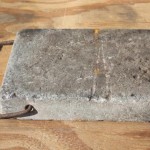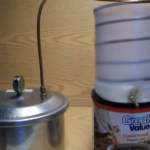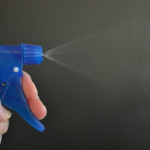How to Choose the Best Material for Torches
Making a rudimentary torch in an emergency is a pretty simple process. Just take a stick, attach some flammable material to the end and light it up. However, finding ways to get the torch to burn as long as possible is the challenge. Let’s take a look at a couple of ideas that may help you to get more burn for your buck out in the field.
Choosing the Best Stick
The first step is to find a good stick that’s just right for you. It should be long enough to keep the flame from getting too close to your face, but light enough to be easy to carry. It should be thick enough to fit in your hand comfortably without placing too much strain on your grip, arm or shoulder. The end should be coarse enough for you to attach the torch material that you want to use, and the stick should be dry. Some people prefer to whittle down the end into a stump or point whereas others leave it in tact but cut notches in order to seat cordage that is holding the material together. There are limitless options to consider, but a good torch always starts out with the right stick.
Fuel Options
Different types of fuel burns at different rates, and you want to use a fuel that is thick and oily for your torch. Allowing your material to soak in the fuel will also dramatically alter the burn life of the torch. However, you can use anything from petroleum jelly to used motor oil for fuel, and your choices are virtually-limitless. Experiment with different types of fuel over time in order to get a sense of what works best with the material that you’re using.
One abundant and natural fuel source comes from sap. You can find sap from almost any coniferous tree, weather dead or alive, and process it in minutes. If you come into contact with some fresh, moist and sticky sap, you can coat the torch or material right then and there. You can also heat globs of sap until they become liquid and then coat the material. In both cases, sap is an abundant source of quality fuel that is non-toxic and slow-burning. Always choose sap over other fuels whenever you have the option.
Material
Finding the best material is part trial-and-error and part taking advantage of what’s available at the time. You can make torch material out of anything from cattails, bark, grasses to kindling, moss, forest debris or fabric. The possibilities are endless.
However, it’s important to choose material that will absorb the best fuel and burn for the longest amount of time. There is a big difference between dousing a shirt that’s wrapped around the torch with lighter fluid and petroleum jelly or sap. The lighter fluid will burn through the material in a just a couple of minutes, and it will most likely char and flake off. Using thicker fuel that is absorbed by the material will generally extend the burn time significantly in comparison.
Using sap is also beneficial because it is so sticky. You can use it to use all types of loose debris and wad them all together in a condensed, gooey ball. Simply attach it to the end of the stick and light it up. It’s impossible to describe the many ways that you can incorporate forest debris into torch material, but it’s really easy to discover it on your own. Melt a good amount of sap and forage for different types of material nearby. Break things up, toss them into the pot and let the sap cool before compressing and molding it around the torch.
The trick to finding the best way to keep torches lit for the longest amount of time is to experiment. However, you will quickly discover that there is a relationship between the fuel and the material that you’re using. Eliminate combinations that don’t work as well as you originally thought, and focus on the ones that do. The more that you can learn now about how to make long-burning torches will help you to be prepared when you need to rely on them out in the field.














